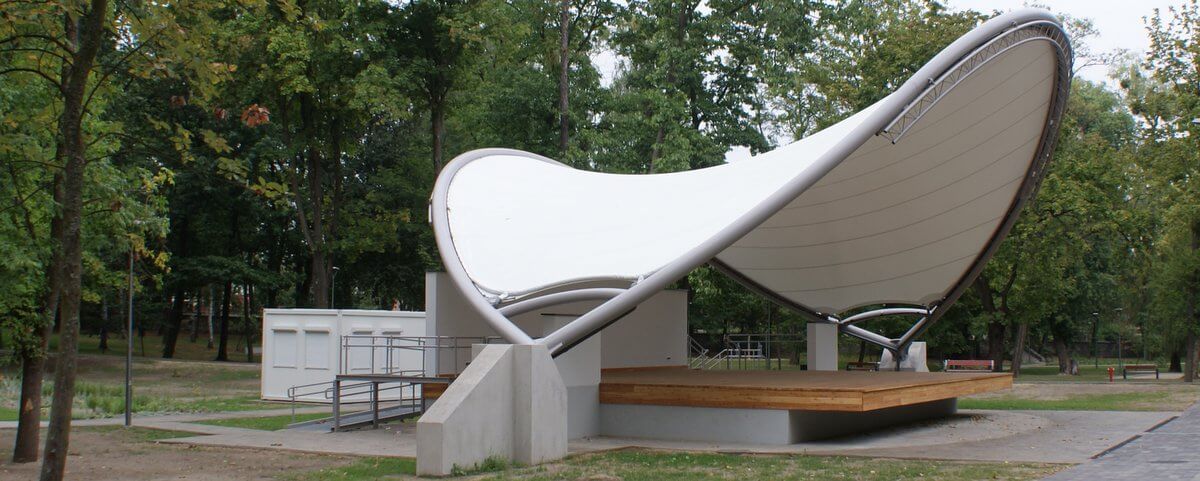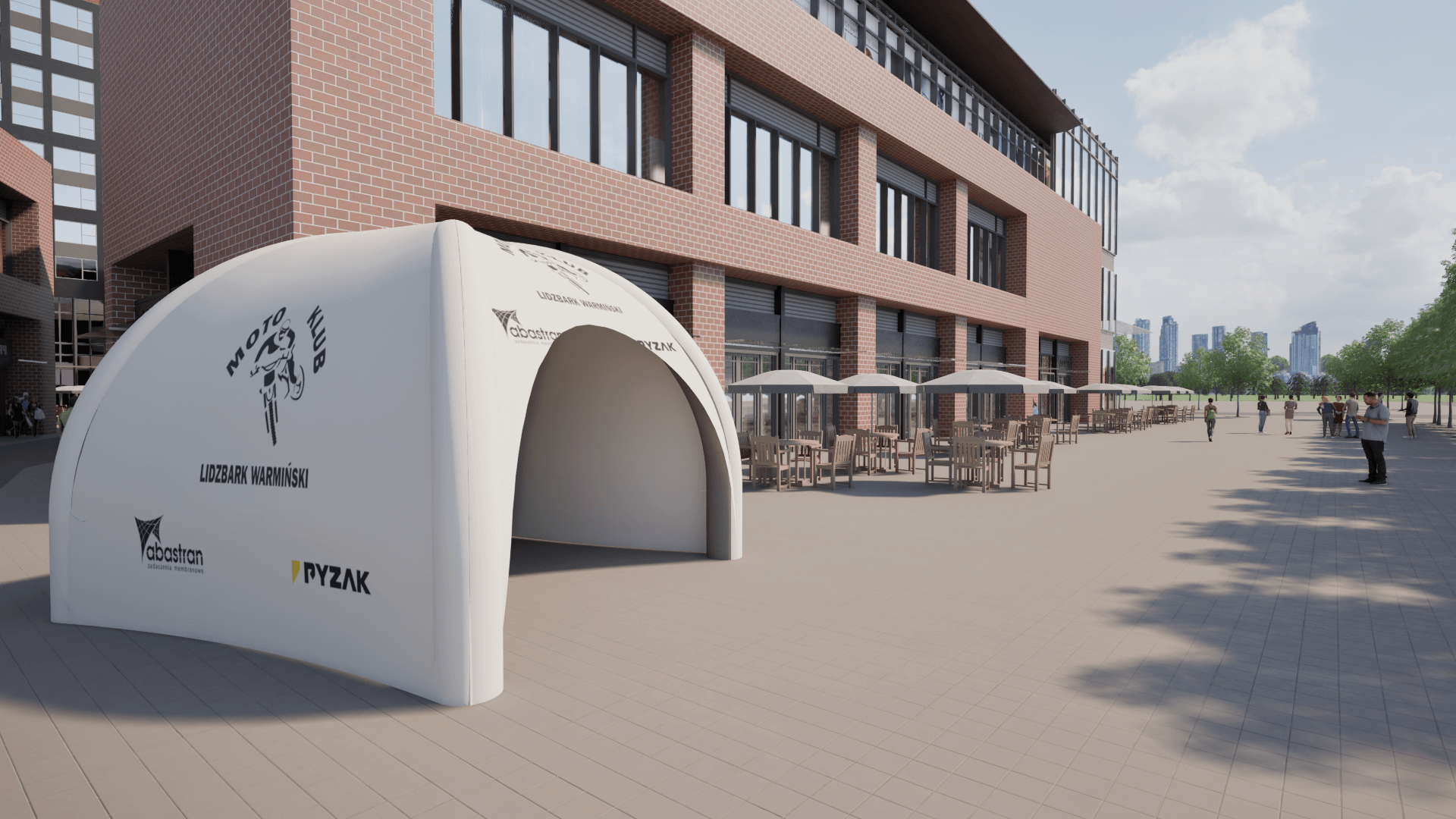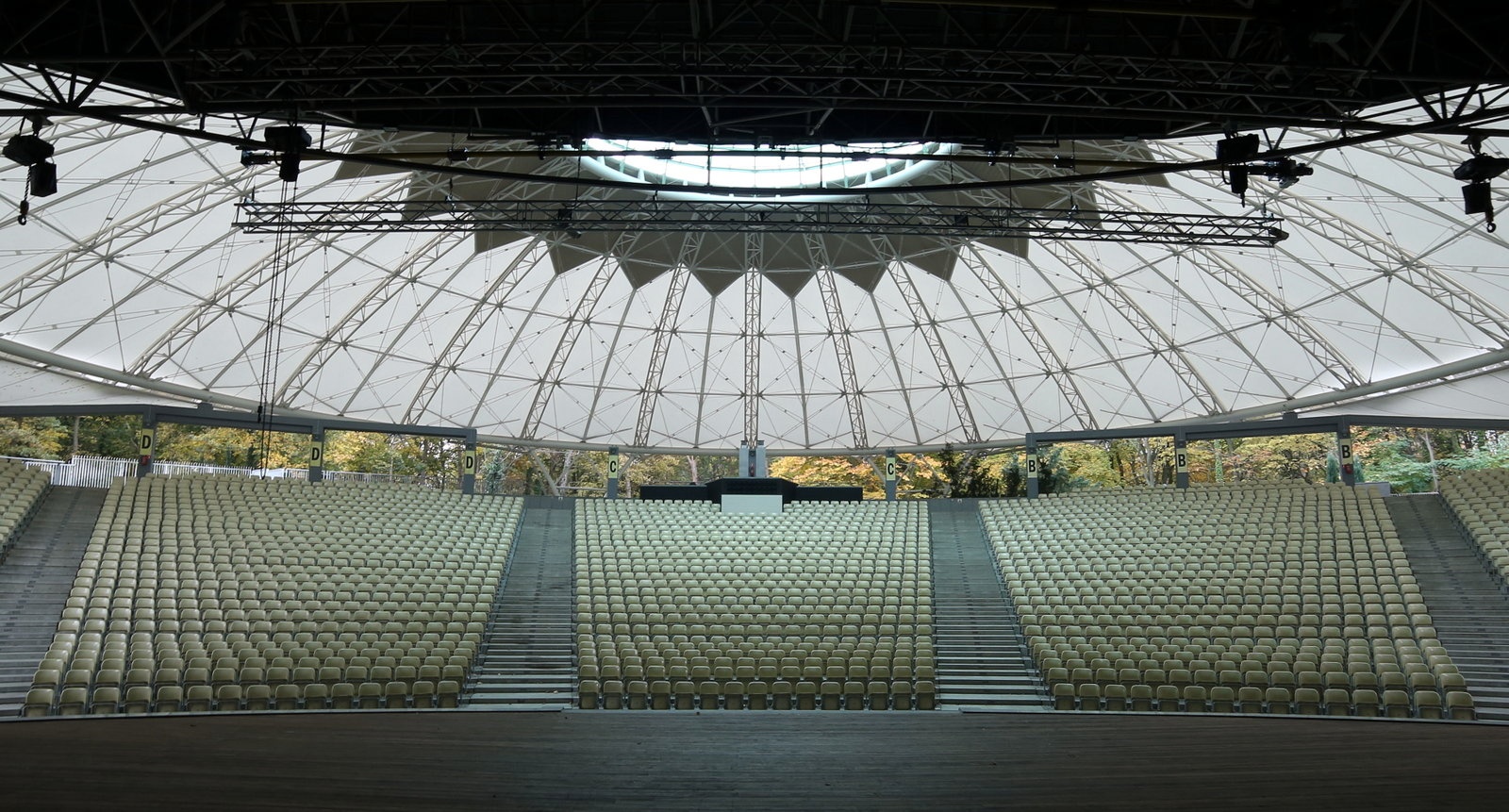
How to Protect a Membrane Structure from Extreme Wind?
Membrane structures, despite their lightness and apparent delicacy, can effectively withstand extreme weather conditions – provided they are properly designed and secured. In the face of increasingly frequent weather anomalies, the issue of protecting these innovative structures from strong winds is becoming a priority for investors and designers.
The Impact of Strong Winds on Membrane Structures
Wind affects architectural membranes in a complex way, causing loads in various directions. The most dangerous phenomenon is uplift, which works on a principle similar to an airplane wing – when air flows over the curved surface of the membrane, it generates lift that can lead to its damage.
Interestingly, properly designed membrane structures can exhibit remarkable durability even during hurricanes. This is due to their flexibility – unlike rigid structures, membranes can partially “cooperate” with the wind, dissipating its energy through controlled deformation.
In the context of ongoing climate change, designing with extreme wind loads in mind is becoming not a luxury, but a necessity.
Key Elements Securing Membrane Structures Against Wind
Effective wind protection begins at the design stage. Attachment points are a critical element of the entire system – they must withstand the enormous forces generated during gales. Properly placed wind bracings and edge reinforcements prevent wind from getting under the membrane.
Equally important is the proper tensioning of the material. A membrane that is too loose will be susceptible to fluttering and water accumulation, while excessive tension can lead to damage during strong gusts. At Abastran, we use advanced CFD (Computational Fluid Dynamics) analyses, which allow us to simulate the behavior of the structure in various wind conditions.
The shape of the structure is also a key factor. Streamlined shapes significantly reduce air resistance, while sharp edges can generate turbulence that increases loads. Our designers use the experience gained from projects in the windiest locations to create structures that work harmoniously with the forces of nature.
Materials Resistant to Extreme Weather Conditions
In the context of wind protection, choosing the right membrane material is crucial. Membranes made of PTFE membrane fabrication exhibit exceptional tensile strength and resistance to extreme weather conditions. Their durability reaches up to 30 years, making them an ideal choice for long-term applications.
Alternatively, PVC membranes, subjected to professional PVC welding, offer an excellent strength-to-price ratio. Advanced material joining technologies ensure that the joints are as strong as the membrane itself – eliminating potential weak points in the structure.
Safety is also determined by the methods of joining individual elements. At Abastran, we use high-frequency welding technologies and precise fastening systems that guarantee the integrity of the structure even in the strongest gusts of wind.
Remember, properly securing a membrane structure against extreme wind conditions requires specialized knowledge and experience. As experts in the design and implementation of advanced membrane structures, we offer comprehensive solutions tailored to the specific conditions of the location and the investor’s requirements. Contact us to find out how we can protect your structure from even the most extreme weather conditions.

Advertising Tents as an Investment – How to Increase Brand Recognition at Events?


Competition for Innovative Membrane Roofing – Results and Inspirations
This year, we had the pleasure of organizing a competition together with the Faculty of Architecture at the Silesian University of Technology for 6th-semester students to design innovative membrane roofing. The award ceremony, held at the Faculty of Architecture in Gliwice, was the culmination of the young designers’ creative and technical journey.








